Made By:
Hot Wheels
Scale:
1/64
MSRP:
US$8.99
| Overview: | |
|---|---|
| Packaging (Design): | 9/10 |
| Packaging (Durability): | 8/10 |
| Casting (Body): | 8/10 |
| Casting (Interior): | N/A |
| Casting (Chassis): | N/A |
| Casting (Engine): | 8/10 |
| Paint (Exterior): | 9/10 |
| Paint (Interior): | 9/10 |
| Paint (Trim/Graphics): | 9/10 |
| Overall Panel Fit: | 9/10 |
| Total Score: | 8.6/10 |

Other Video Game Models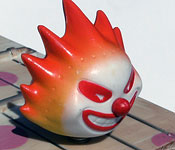
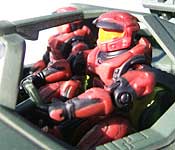
Left 4 Dead 2 Jimmy Gibbs, Jr. Racer
Metal Slug SV-001/I
Lamborghini American Challenge Diablo
MarioKart DS Royale (Review)
Real Drift Corvette Z06
Halo 5 Tundra Warthog
Simpsons: Hit & Run Honor Roller
OutRun Testarossa
Arkham Knight Batmobile (Review)
Mario Kart 8 Sports Coupe (Review)
Simpsons: Hit & Run Canyonero
Halo 2 Warthog (Review)
Portal 2 Defective Sentry
Need for Speed Murciélago (Review)
Ghostbusters: The Video Game Ecto-1B
Kirby...Forgotten Land Karby (Review)
Need for Speed Mustang GT (Review)
Need for Speed ‘69 Charger (Review)
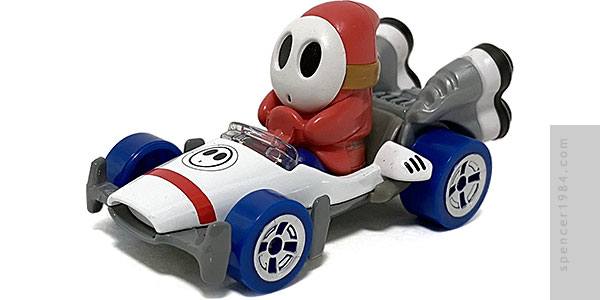
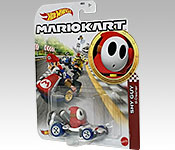

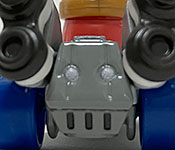
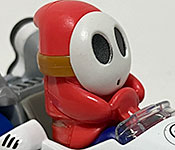
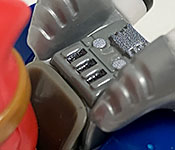

Background
The B-Dasher was the first Kart in the series to be based on a full-sized race car, most likely the Honda RA272. Designed by Yoshio Nakamura and Shoichi Sano for the 1965 season, the RA272 was the first Japanese car to win in Formula One and dominated the 1965 Mexican Grand Prix with driver Richie Ginther achieving his only career win. Honda-powered F1 cars would go on to claim over 80 more victories.
Packaging
The card is identical to the line's standard, with only the portrait and name having been changed and the vertical strip behind the name in maroon.
Casting/Paint
The B-Dasher is quite a bit simpler than some of the other Karts we've seen in the series, but that doesn't mean Mattel got lazy. The shaping is excellent, with the correct bulged fuselage and all the correct details around the rear wheels. The exhaust pipes have been notched to clear the rear wheels, but even the larger version had to make that concession. Mattel does have an edge here by including a separate clear windshield, which going by the wheels and hood lines would be appropriate for its MarioKart 8 appearance. The paint has a semigloss finish, with a neatly placed stripe and badge on the nose and three sharp little marks to indicate the vents on the sides. The engine is gloss gray with black and metallic painted details, and a set of plastic exhaust pipes with white collars and dark gray tips. Assembly is as clean as could be hoped for, with good tight joints and no visible mold defects.
Shy Guy looks pretty good, though he too suffers from the vertical parting seam seen on so many figures. It'sa little less obvious here thanks to the color, and further helped by being a complete head-to-toe costume...you can always just claim it's stitching. He has a white mask with black eye/mouth holes and a brown band, a darker reddish-brown belt, and the tips of purple shoes peeking out from under the edge of his robe. The colors are generally good and placed correctly, though the belt could've used a second coat. Being molded as part of the figure, the steering wheel here is bright red.
Features/Accessories
Nada.
Accuracy
As with the Pipe Frame, Mattel has added "track bumpers" around the front wheels so they won't drag and slow the car down if you decide to race it. Again, they did what they could to integrate the design into the car, but they still kind of stick out. The body has been painted white on top and gray underneath, which sort of mimics the game design though the gray area never comes this far forward. It may be an effort to further reduce the look of the bumpers, or it could be an attempt at recreating the shadow of the lower half, either way it's not 100% accurate but doesn't detract too much.
Overall
I like this take on the B-Dasher. It would've been nice to not have the bumpers around the front wheels, but they at least have a good reason for being there. Shy Guy continues the trend of great-looking figures in the Karts, and makes for a nice change of pace from the usual "classic Mario" lineup.
Send me an e-mail with your thoughts!